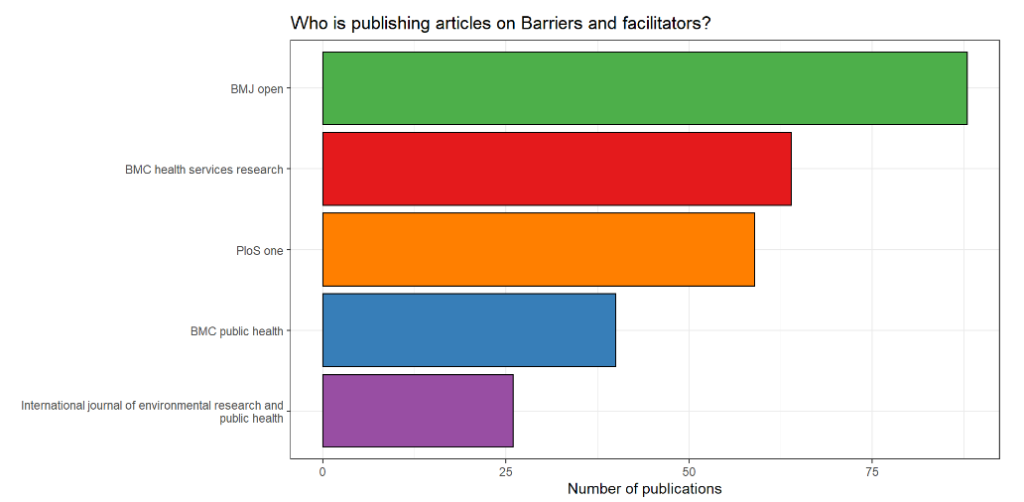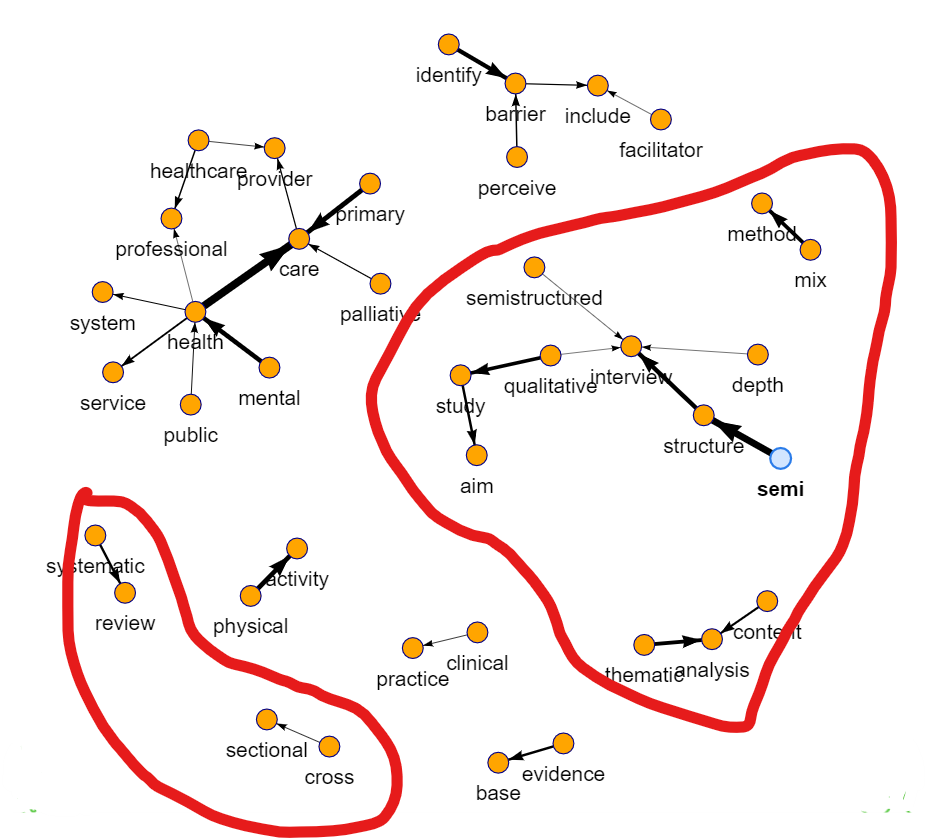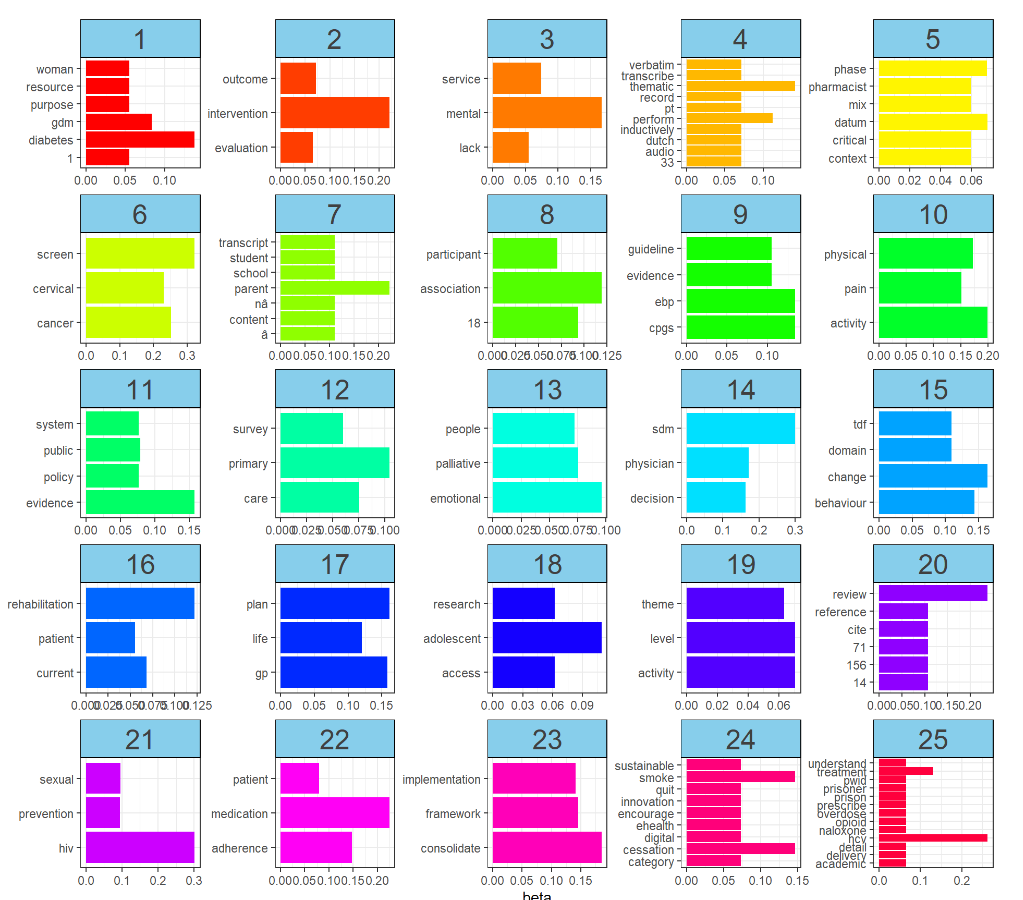I think if I read another “barriers and facilitators” article about implementation, I might conk right out here at my desk. There was one just this morning! Hell, here’s one from just one week prior! The reality is that these articles are all too common. Broadly, I pretty sure that I’ve the read sentence, “A lack of time to implement the intervention was perceived as a critical barrier.” dozens of time. Ditto for “Leadership support was a crucial facilitator.” To be fair this quote came from the Michas article
While community and primary health care providers saw education and training as a more vital contributor to uptake, they did not describe lack of time as a barrier. Contrary to our findings, Lennox et al. [36] found lack of time (“staff too busy”) as the most prominent barrier to bundle implementation in their study on implementation of a COPD care bundle in hospitals in London (UK).
Michas, Marta, et al. “Factors influencing the implementation and uptake of a discharge care bundle for patients with acute exacerbation of chronic obstructive pulmonary disease: a qualitative focus group study.” Implementation Science Communications 1.1 (2020): 1-12.
Anyway, these articles keep on coming. So, rather than try to do another yet another review, I used a program I’ve been writing to run a text-based synthesis, PubTrawlr. What I did first is pull all articles in PubMed that had the phrase, “barriers and facilitators.” That ended up returning 1979 articles, really heavily weighted to the last three years. I could have upped the maximum number of articles I returned, but that would eventually have taken a lot longer to run the analysis.
Most of the articles are coming from the BMJ family, as seen below. This shows the top five journals publishing on that phrase. That was surprising as I expected the implementation or improvement literature to be much more heavily represented.

I then looked at word pairs. This technique gives a pretty high-level overview of some of the frequently occurring concepts. Looking at below, what really stands out are the prevalence of “methods” terminology. I circled these in red to somehow make it stand out even more. Another cluster in the upper left hand side suggests that health care is the primary setting for many of these studies (shout out to palliative care.)

I then looked at look at the specific topics. This below figure shows the 25 topics that were empirically derived using Latent Dirichlet Allocation (LDA). I talked about this a bit in Monday’s post. Each of these topics has a number of words more likely to occur in articles corresponding to that topic. What is really interesting here is the extent to which the research domain clusters according to topic. Topic 6 is clearly about cancer screening. Topic 7 involves school-based settings. Topic 24 is smoking cessation. And, I would bet a few bucks that Topic 23 concerns the Consolidated Framework for Implementation Research.

Actually, let’s check that. I concatenated all the abstracts under Topic 23, then pulled the topic four sentences according to lexical similarity. This is process called extractive summarization. What’s the algorithm say?
Semistructured interviews based on the Consolidated Framework for Implementation Research (CFIR) were conducted at 0, 4, and 12 months with 12 program staff members to identify the barriers and facilitators of the implementation. Champions also described several barriers and facilitators to program implementation. The Consolidated Framework for Implementation Research was used to guide this national implementation where barriers and facilitators to DBT implementation were considered. We performed qualitative thematic analysis to identify barriers and facilitators to the implementation process, with analysis guided by the Consolidated Framework for Implementation Research.
NOT BAD!
Okay, but what’s not in this analysis. I didn’t see anything of the classic words, like leadership, time, or support. While these wouldn’t have shown up in the LDA if they were really prevalent across the articles, they would have appeared in the word pairs.
What I’d take away from this brief look at the barriers and facilitators is that research seems to still be pretty domain specific. And herein lies the rub. A core tenet of implementation science (and community psychology for that matter) is that CONTEXT MATTERS. We can’t just expect what works in one setting to work in another. However, surely we are getting closer to the point where we can say what probably works across settings? My own work in readiness tries to be transdisciplinary, but it’s clear more work needs to be done.

